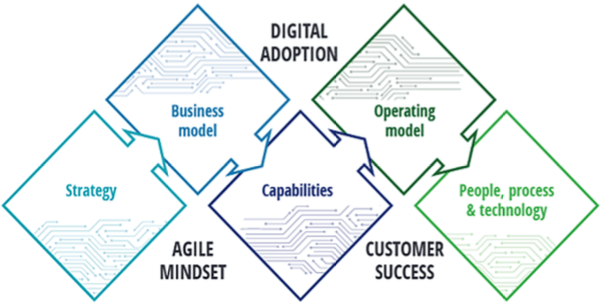INTRODUCTION
Historically, participants in the semiconductor ecosystem have proven to be among the most resilient and effective at navigating change. However, with unprecedented market dynamics and a continuous flow of industry disruptions, semiconductor leaders like you are challenged to transform your businesses to remain competitive and profitable. With all of the noise in the media and market around digital transformation and Industry 4.0, defining and effectively navigating a business transformation that is right for you and your company can prove challenging. Additionally, the ongoing COVID-19 global pandemic has created new urgency around current or planned business transformations.
OBJECTIVE
The objective of this survey and associated Semiconductor Transformation Study (STS) report is to provide participants a playbook for navigating through their particular business transformations. The survey and report will not only benchmark where participants are in their respective business transformations but will also provide guidance on the next steps to take in their transformation journeys. The survey is structured according to five key transformation components: Strategy, Business Model, Capabilities, Operating Model and People/Process/Technology. A brief description of each of these components follows.

Digital Transformation Framework
STRATEGY
Digital transformation starts with articulating the strategy for the transformation, which sets the guiding principles and objectives of the transformation. Those objectives include not only bold, long-term visions, but also concrete and measurable short- and medium-term objectives.
BUSINESS MODEL
The business model identifies the target markets and segments and how to succeed in those markets and segments. The business model addresses delivery, monetization, support, and/or other aspects pertaining to the target markets and segments.
CAPABILITIES
Capabilities represent discrete sets of objectives, processes, technologies, and talent that collectively generate value for an organization. This step not only identifies a prioritized map of needed capabilities, but also the optimal paths for obtaining those capabilities.
OPERATING MODEL
The operating model specifies how you will configure capabilities to achieve transformation objectives. The operating model identifies who and/or what will do the functional work to realize the value of each of the target capabilities.
PEOPLE, PROCESS, and TECHNOLOGY
Successful execution of the transformation is reliant on the people, processes, and technology of an organization. People need to be in the right places, with the right skills, and in the right culture to effectively perform the processes designed to carry out the transformation. Having the right digital technology elements is paramount to transformation success.
If you have any questions/concerns with this survey, please email us at membership@gsaglobal.org

